Clark County Law enforcement agencies’ uniform patches tell unique stories
Law enforcement officers nationwide don crisp uniforms meant to instill a sense of authority. The dark blues and blacks or khaki-colored suits leave little to the imagination.
But there’s a feature of the cop getup that has more character and local history tied to its design that may go unnoticed: the arm patch.
Of the eight main agencies policing Clark County, five of them feature a nature scene. A river here; a mountain there. Versions of Ridgefield and Battle Ground police departments’ patches include Mount St. Helens, one erupting and the other not. Some of the patches feature symbols of the county’s trailblazer days of old.
Overall, they’re pretty innocuous.
Enlarge
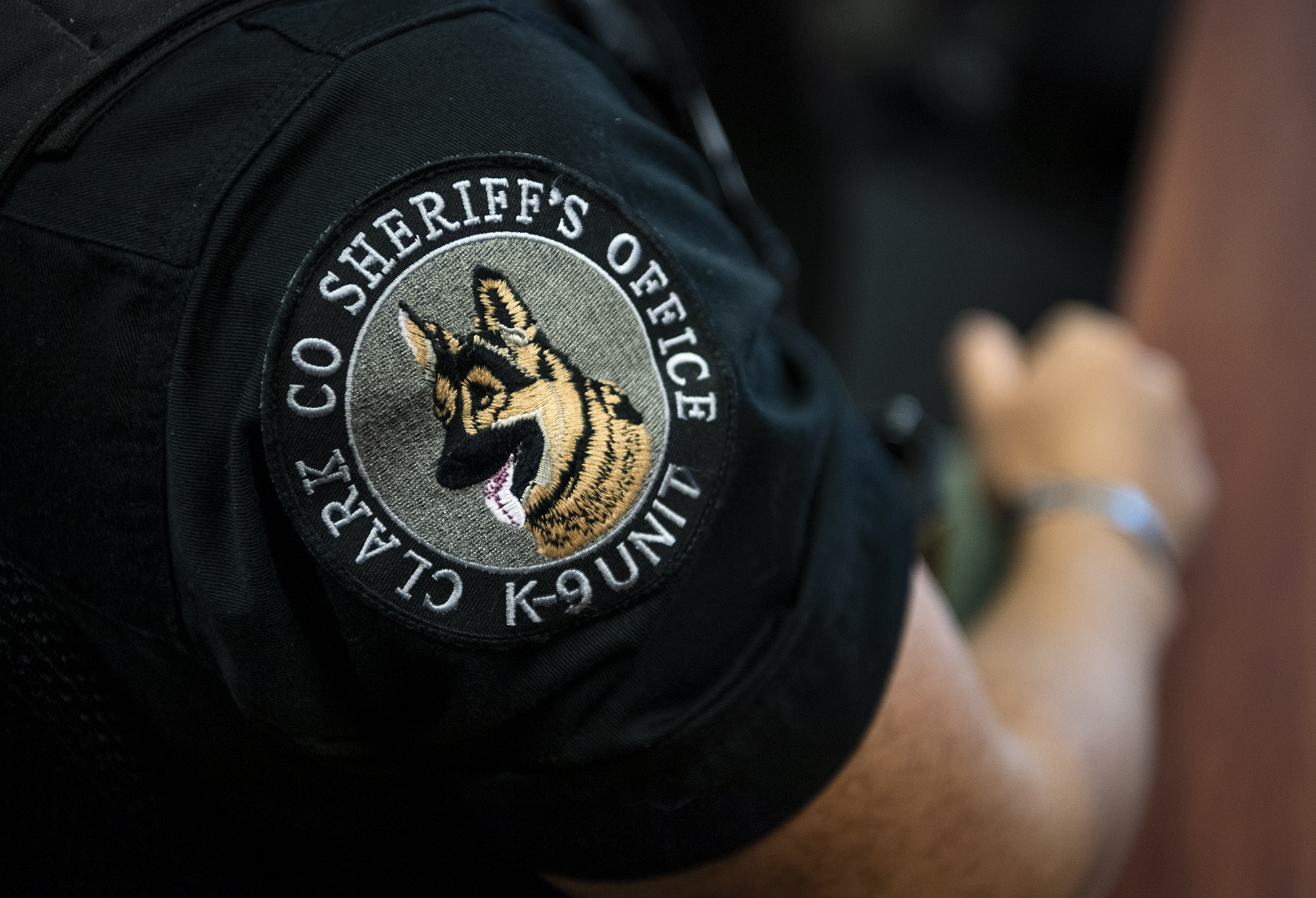
Alisha Jucevic/The Columbian
Elsewhere, some patches have drawn protest, public debate and lawsuits, as reported by The Marshall Project, which profiled a handful of contentious badges on its Instagram account. For example, the Las Cruces, N.M., Police Department features crosses. (Las Cruces translates to “the crosses” in English). The Christian symbol in the patch prompted a lawsuit, but a federal appellate court ruled the city’s name justified the design.
No criminal justice officials in Clark County recalled any controversies surrounding their patches.
When asked how patches played into American law enforcement culture, and how they may elicit controversy, Criminal Justice Associate Professor Kathryn DuBois at Washington State University Vancouver said they could fall under the debate over perceived police militarization. Public awareness and media coverage of police militarization has largely focused on the acquisition of military equipment by police, but the adoption of tenets and symbols originating in the American military have also been examined.
“In my opinion, our local agencies have done a pretty good job of keeping a tamper on that sort of thing, and it’s something that you see in their uniforms. For instance, I find it remarkable that (Clark County Sheriff’s Office) has kept with the khaki and green ‘Sheriff Taylor’ colors rather than going all-black like most agencies have done,” DuBois said. (“Sheriff Taylor” is a reference to Sheriff Andrew “Andy” Jackson Taylor, the lead character on “The Andy Griffith Show.”)
Enlarge
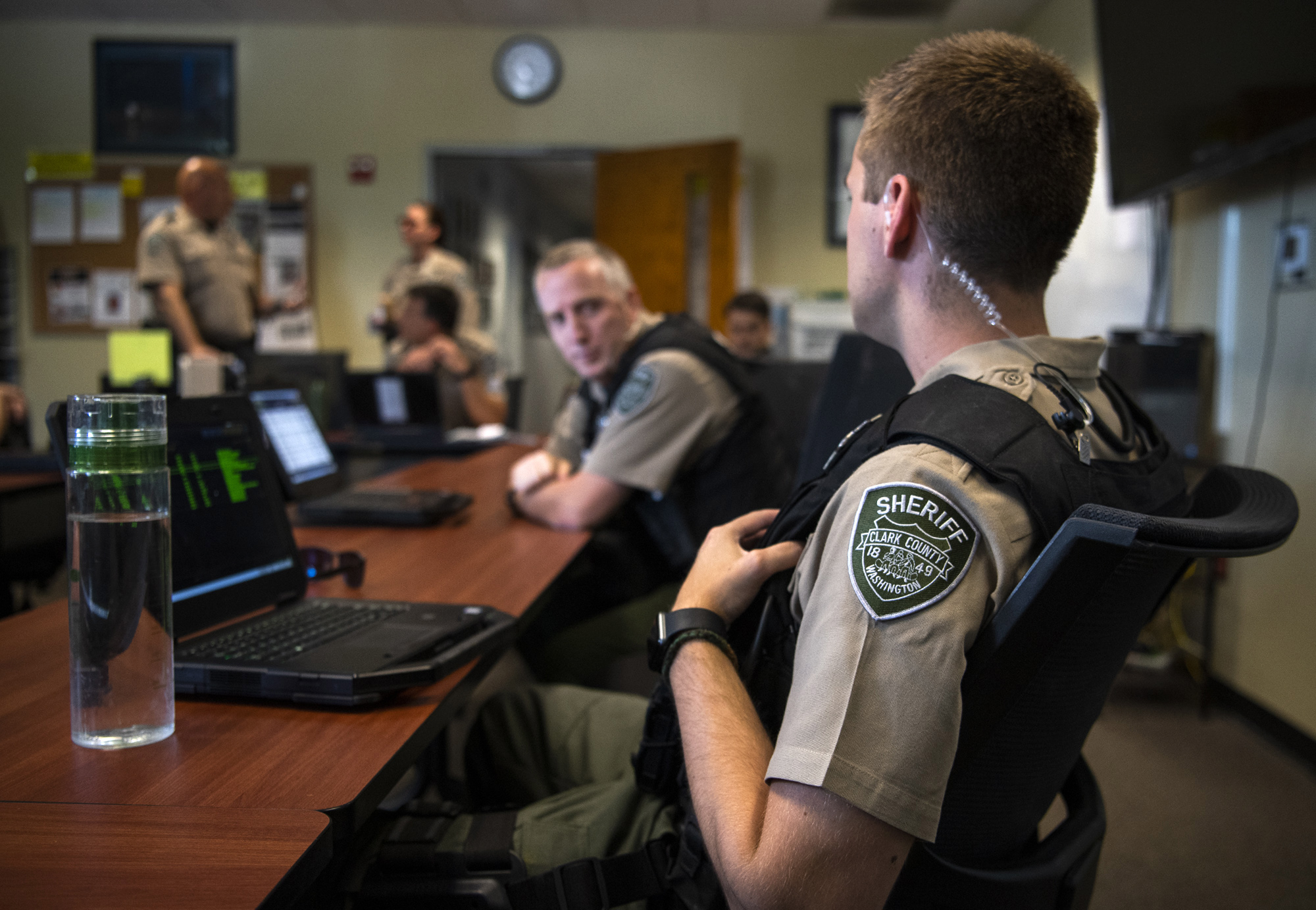
Alisha Jucevic/The Columbian
The patches and timelines of their histories provided by local agencies featured simple designs that generally began with just the names of the departments and evolved into scenes of nature and Pacific Northwest pioneering.
Law enforcement agencies uniquely identify themselves by the badge they wear on their chest and the patch on their shoulder, said Vancouver Police Department Chief James McElvain.
“Each symbol is something officers have come to honor and respect; they not only represent the history of the department, and those who have served before them, but the community they are proud to serve,” McElvain said.
Washougal Police Department Cmdr. Allen Cook said patches are used so residents can immediately identify someone as a police officer, and the officers’ area of jurisdiction.
“That’s what they’re intended for. Our most current patch serves those purposes. It clearly shows the word ‘police,’ and that we’re a Washington department, both of which are important,” Cook said.
Enlarge

The Columbian/submitted photo
Ridgefield Police Department
The Ridgefield Police Department’s patch is snow globe-shaped piece of straightforward stitchwork. A sandhill crane is depicted flying above the words City of Ridgefield, with “POLICE” needled on the base. The crane is the focal point of the patch, which was used in recognition of the Ridgefield National Wildlife Refuge that borders the city.
The police department’s old patch featured a larger palette of colors, Canada geese and Mount St. Helens erupting in the background. Ridgefield also has one specialty patch — a pink version of its newest patch that was done for breast cancer awareness month in October.
Enlarge

Submitted photos
La Center Police Department
In 1994, the La Center Police Department changed from being a town marshal’s office. At the time, it adopted what was described as a generic police patch.
That same year one of its officers, Jay Barnett, designed a version of the patch that would eventually become the current version, said Police Chief Marc Denney. The revised patch was adopted in early 1995. Barnett’s original design incorporated playing cards, stemming from the town’s history of cardrooms, but the idea was nixed at some point.
The police department said the patch came to fruition largely because of the efforts of former city clerk and treasurer Janice Fillman. So here’s the patch: A combination of the town’s history and natural beauty; it features a sternwheeler boat, used in logging operations, on the East Fork of the Lewis River.
The previous patch was the image of an eagle — POLICE blazoned across its feathered chest — perched between the U.S. and Washington state flags.
Enlarge

Submitted photos
Battle Ground Police Department
Battle Ground has had several different patches in the history of its police department, and there are three different versions of the current patch that are issued based on rank. The patch — whether it’s the monochromatic version, or the silver- or gold-trimmed form given to sergeants and lieutenants — displays a portrait of nature within a circular Battle Ground city seal. The image is a forest, Battle Ground Lake and Mount St. Helens in the background. The Class A patch was updated in 2016 to make it appear “a little more contemporary,” said Police Chief Bob Richardson. (The circular seal is framed with a solid, dark navy blue, instead of two lighter blues).
The department’s inaugural patch was also a circular seal. The image inside the seal was a hunter holding a rifle, facing a log cabin in the woods.
Enlarge
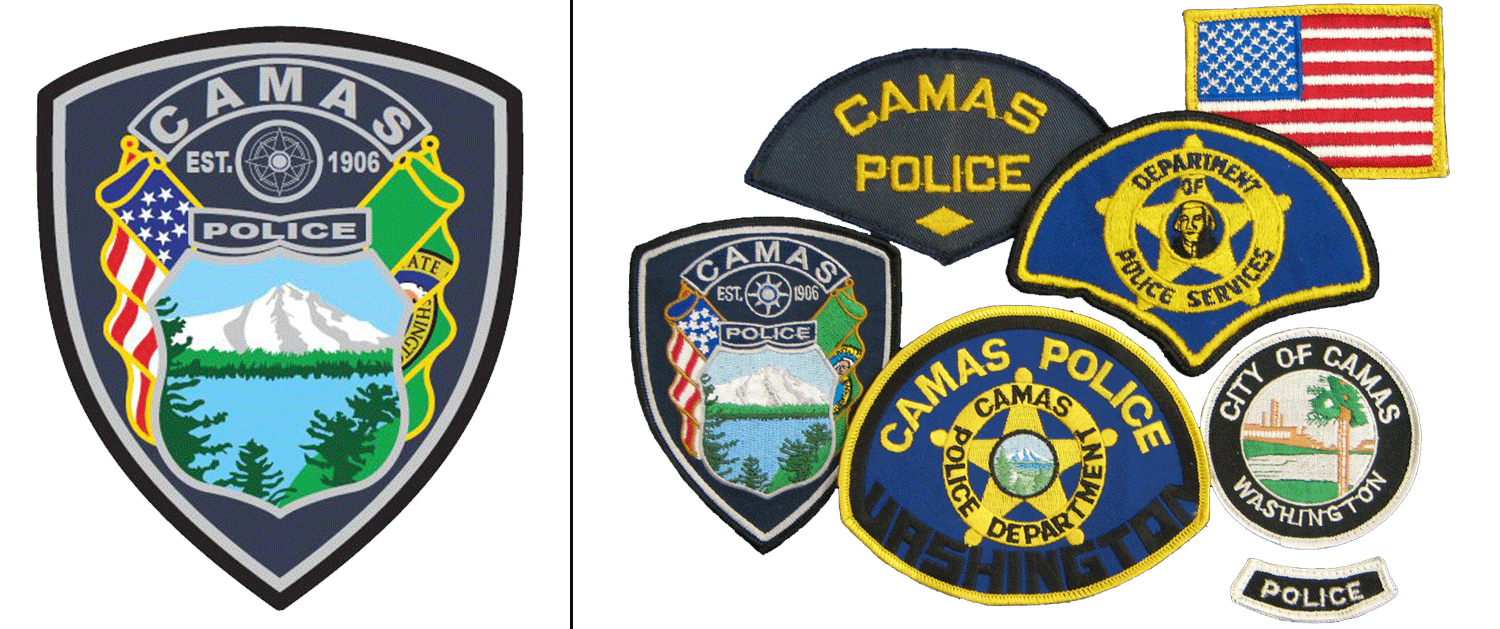
Submitted photos
Camas Police Department
Previous versions of the Camas Police Department patch usually contained images related to the town’s prominent paper mill. The police department decided to move away from the theme on its newest patch, said Officer David Chaney.
The current patch was designed to show the scenery in Camas and the town’s proximity to the Columbia River. There is also a compass meant to represent the Lewis and Clark expedition. Rounding out the patch are the U.S. and Washington flags, which former Chief Don Chaney, who created the patch, thought were important to include on the design.
It’s been in use since 2007 and was updated for no major reason beyond “we felt it was time for a change,” David Chaney said. The Camas Police Department only has one patch, but it comes in various colors for different uniforms.
Enlarge
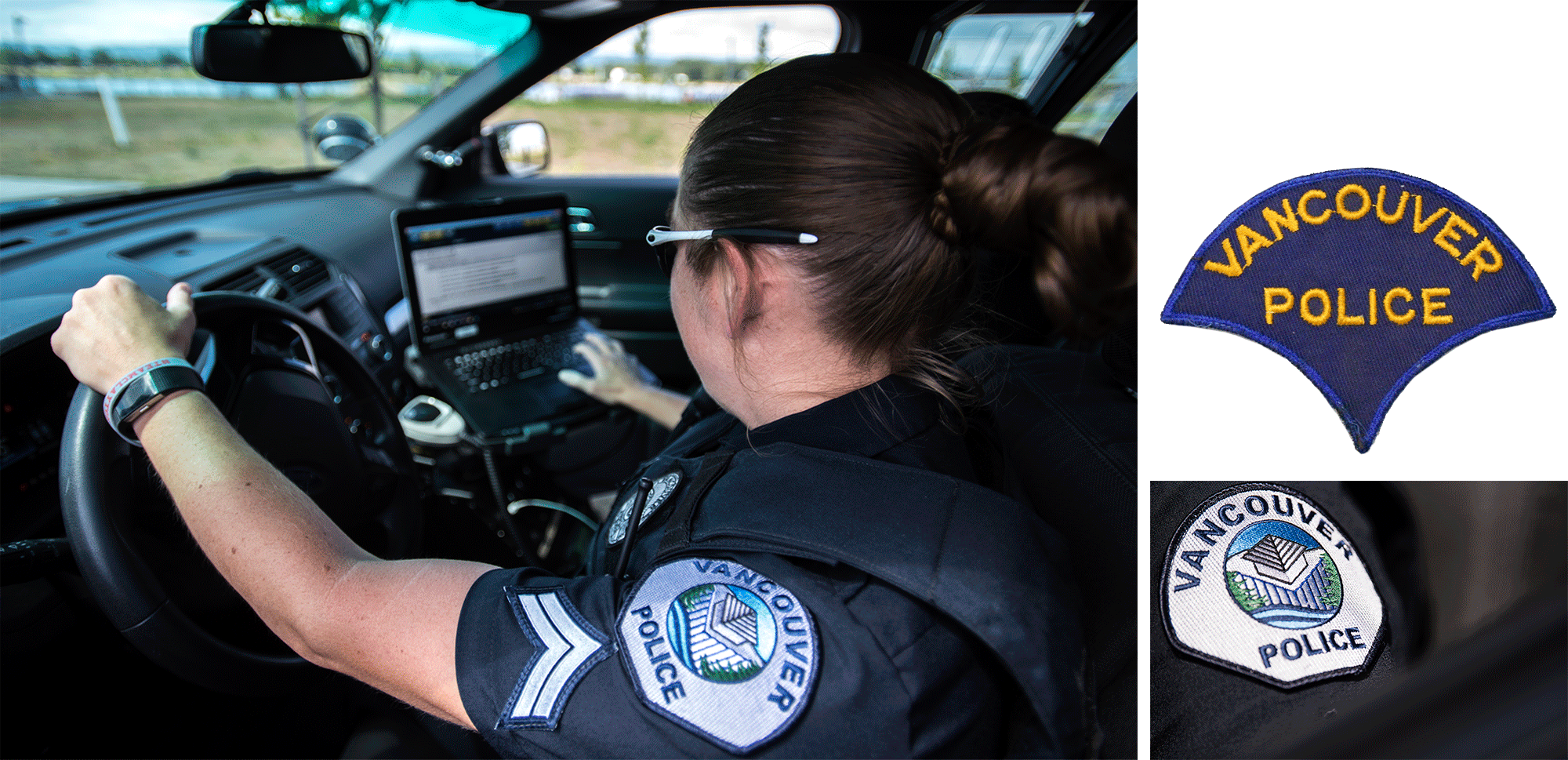
Nathan Howard of The Columbian and submitted photo
Vancouver Police Department
History Project Coordinator Benjamin Melgard said the design of the Vancouver Police Department patch is based on the city’s official symbols, Fort Vancouver and the Columbia River. It’s been in use since 2014, when the city adopted new, official symbols. The patch shows a geometric, gray cube representing a cabin with log roof, surrounded by the fort’s log perimeter.
Previous variations of the patch featured the fort as well as Mount St. Helens. There are four units at the police department that have their own unique patches. The K-9 unit patch is a stitching of the head of a German shepherd, the typical breed of police dogs, with its tongue sticking out.
As far as Melgard knew, there have been no controversies over any of the department’s patches. Two iterations have featured the fort and, much like many of the other patches worn by Clark County law enforcement, a nature scene.
Enlarge
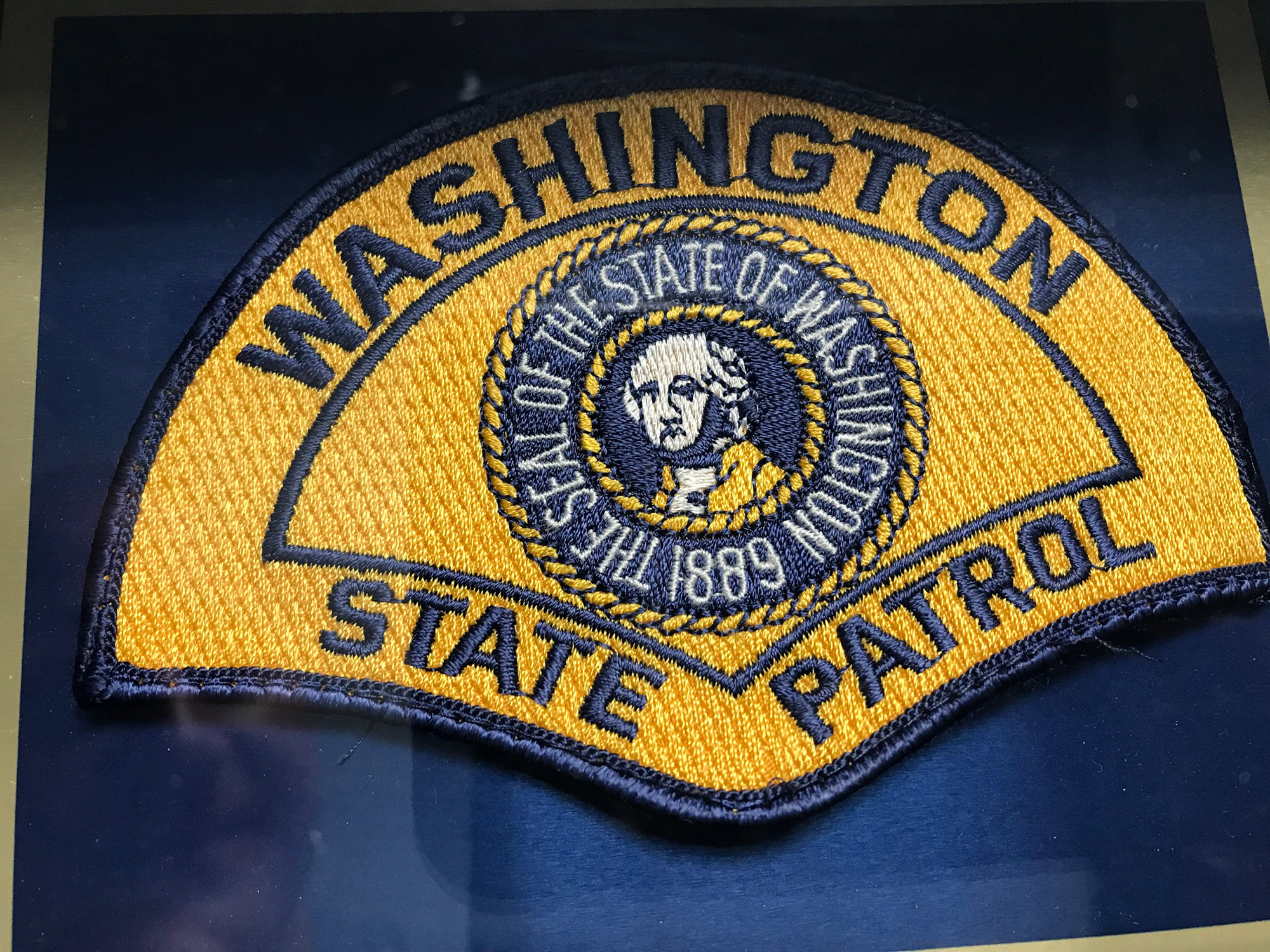
Submitted photo
Washington State Patrol
Washington State Patrol troopers statewide wear a patch that features blue letters on a gold background. It also includes a portrait of George Washington, identical to the image on the state flag and numerous other, older patches worn by law enforcement in years past. The troopers’ patch was first designed for the territorial centennial in 1953. An earlier patch featured a “frontier picture” in its center, but it was replaced with the state seal, according to a history of the patch provided by State Patrol.
Enlarge
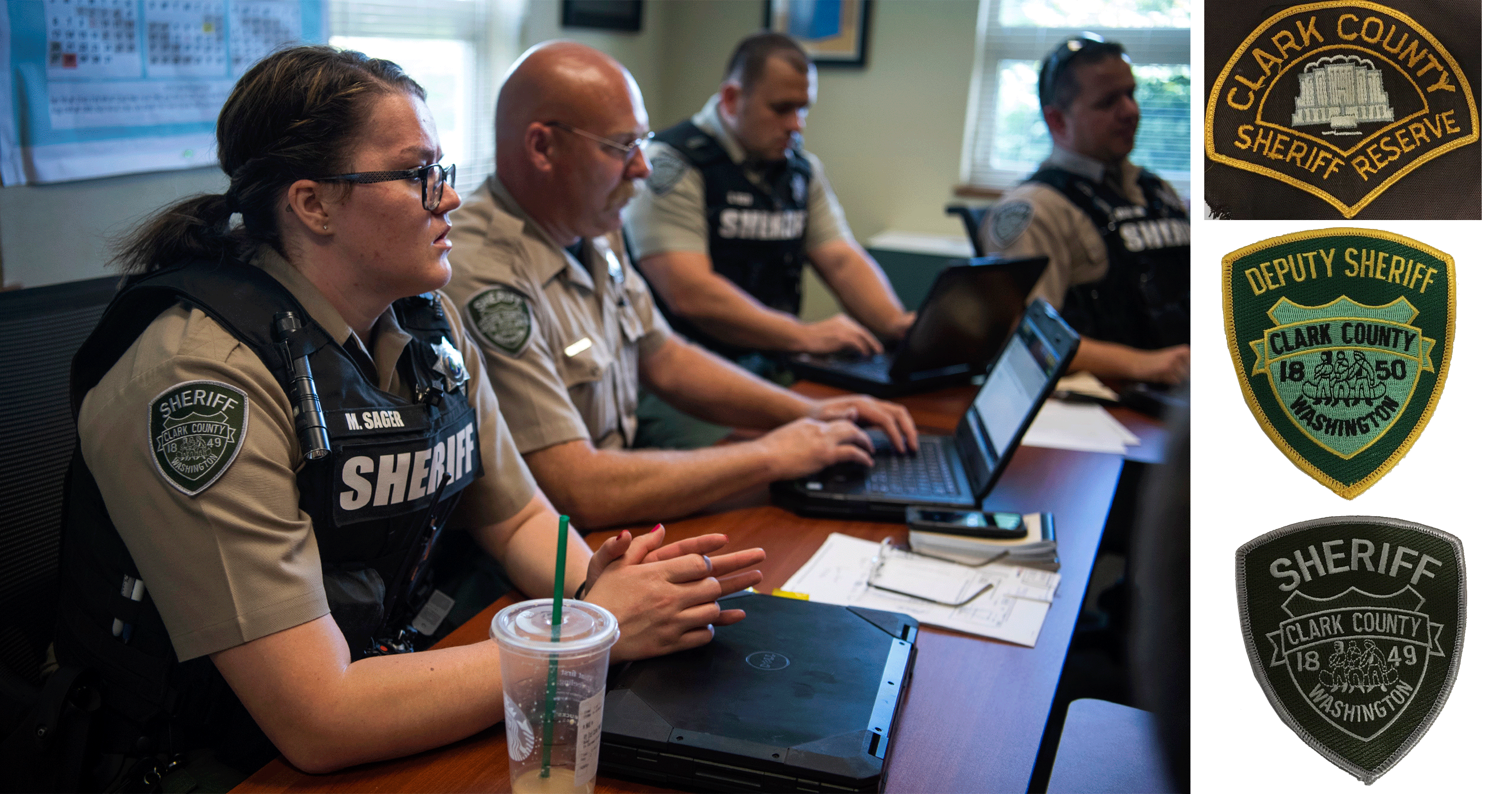
Alisha Jucevic/The Columbian and submitted photos
Clark County Sheriff’s Office
When Sgt. Fred Neiman joined the Clark County Sheriff’s Office as a reserve deputy in January 1980, all deputies wore a dark brown shirt with a left shoulder patch depicting the former county courthouse, which housed the sheriff’s office. (The sheriff’s office was in the bottom floor of the building; the Clark County Jail, operated by deputies, was the top floor).
In the mid-1980s or so, Neiman said, all deputies switched to a uniform with a dark green shirt and a green patch on the left shoulder with three figures in a canoe. Office knowledge suggests that the group of paddlers represent the early European explorers to the Pacific Northwest. The current patch still features the same image, but the colors have been simplified — a black patch with gray stitching and border.
An even older patch, which was used from about 1950 to the 1970s, was worn on both shoulders and simply said “Deputy Sheriff Clark County.” It’s unknown if there was a patch before that version.
Enlarge
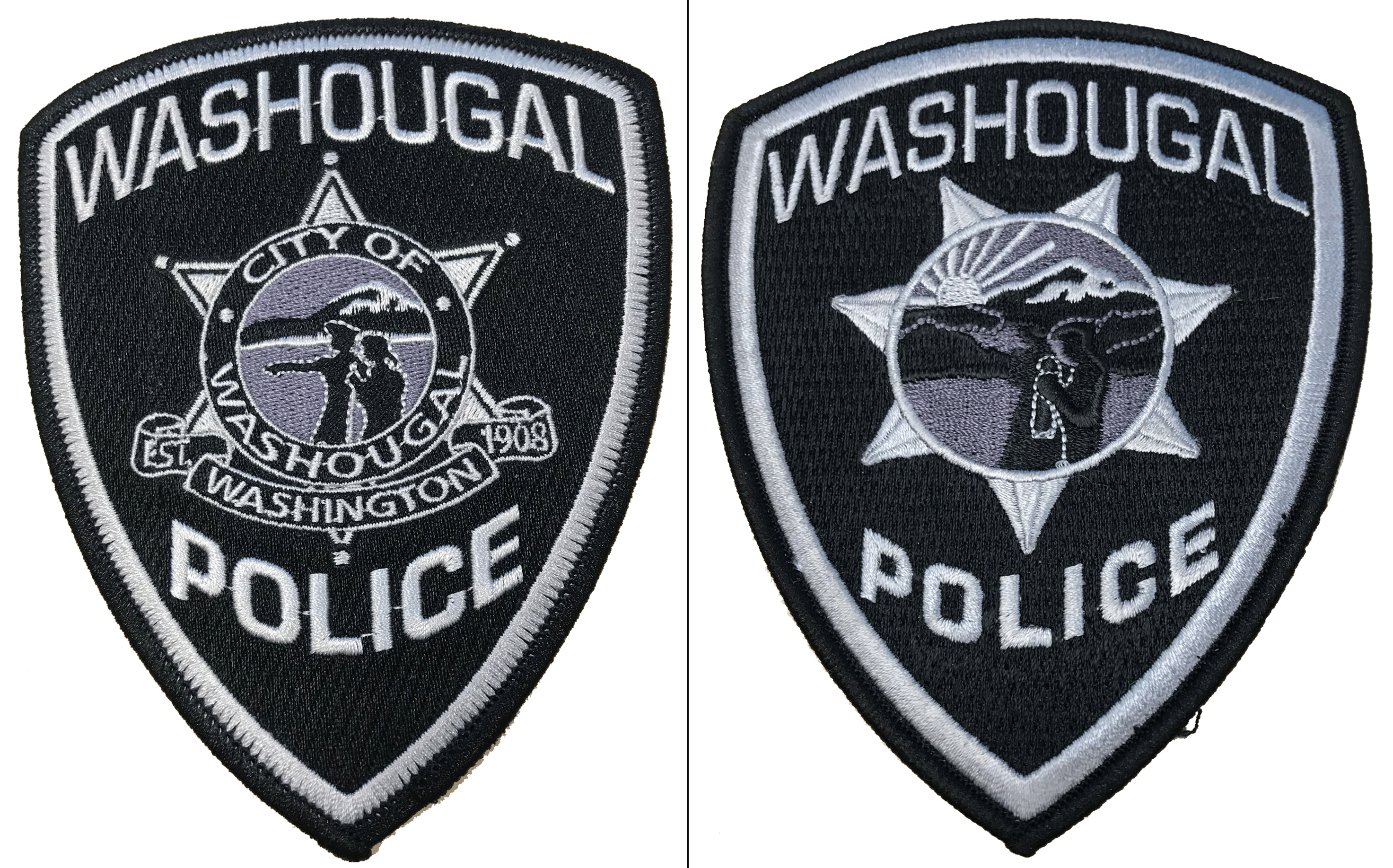
Submitted photos
Washougal Police Department
The Washougal Police Department’s patch features two guys from the East Coast and a mountain in Oregon. That’s how Cmdr. Allen Cook jokingly described that part of his uniform, noting the patch is much like its local counterparts that include elements of nature and the region’s pioneer days. The center image of the patch is two silhouetted figures, Meriwether Lewis and William Clark, with Mount Hood in the background. The border around the scene is the traditional police star.
The previous patch also featured Lewis and Clark, but the silhouettes weren’t as defined. People often confused it for one person holding something like prayer beads, Cook said. The border was also what the commander referred to as the California-style law enforcement star, used on the patches of officers at California Highway Patrol.